
In the previous post on Barcelona I introduced El Gòtic, the heart of Barcelona’s old city, and Las Ramblas, the city wall turned promenade. A bike ride through the neighborhoods of Barceloneta, Vila Olímpica and Sant Martí introduced some of the more recent architectural constructs of last few decades. Now I follow the expansion of the city beyond El Gòtic, and the architecture of the old and new Barcelona.
The next phase of Barcelona’s expansion was El Raval, located to the left of Las Ramblas. The Roman core of Barcelona expanded into the Gothic quarters it further expanded to engulf El Raval, at which point a new city wall was built to incorporate El Raval.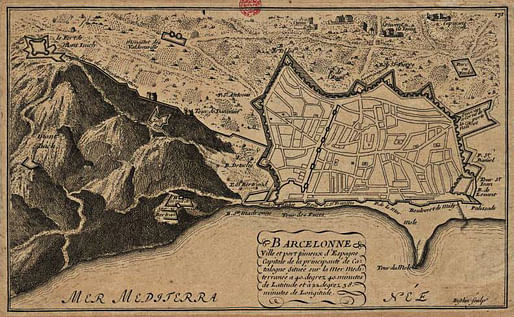
Antoni Gaudí: Palau Güell
Located in El Raval this residential palace was designed by Antoni Gaudí for the Catalan tycoon Eusebi Güell. The same tycoon who commissioned the housing district of what would later become the Park Güell.
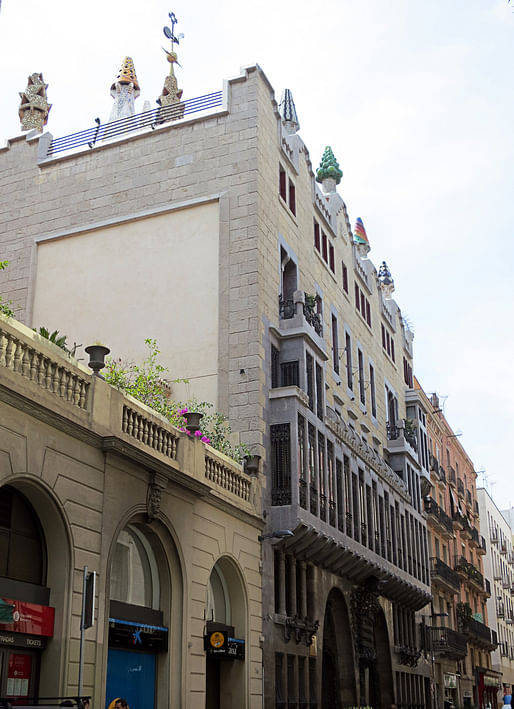
Passeig de Gràcia
Prior to the 1800’s the Passeig de Gràcia, known as Camí de Jesús ("Jesus Road"), was an unpaved road that lead out of the old city, through farmlands, to the small village of Gracia, north of the old city. In Roman times the road connected to the Via Augusta in Rome. In the 1850’s the walls surrounding La Ciutat Vella were torn down, industry in the city of Barcelona began expanding rapidly and migrants began pouring in. The Passeig de Gràcia pointed to an axis for the city’s expansion.
It was designed as an opulent avenue, and continues to remain as one of Barcelona’s most luxurious streets. The avenue is lined with benches and street lamps designed by architect Pere Falqués i Urpí and paving stones designed by Antoni Gaudí.
Antoni Gaudí: Casa Batlló
Located in the Eixample district along the Passeig de Gràcia, Casa Batlló was originally built in 1877, and was restored by Antoni Gaudí and Josep Maria Jujol in 1904-1906. It was renovated in the style of Modernisme, or Catalan Art Nouveau. 
The nickname of the building is the Casa Dels Ossos or the House of Bones.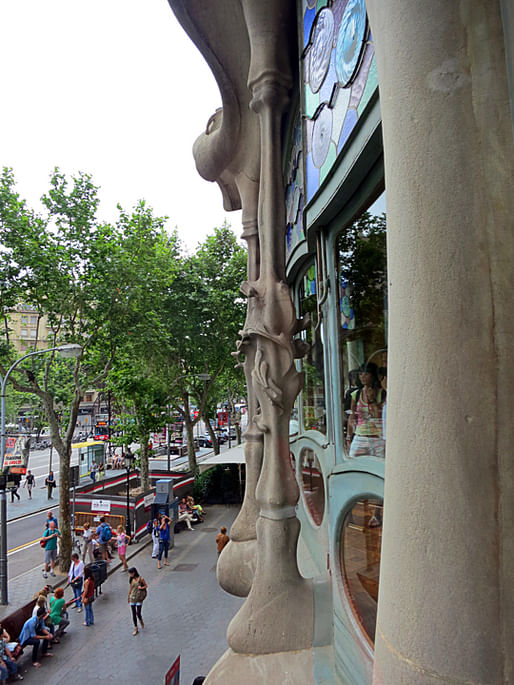
The facade of the main floor is made entirely in Montjuïc sandstone.
A Model of Casa Batlló on display at La Pedrera.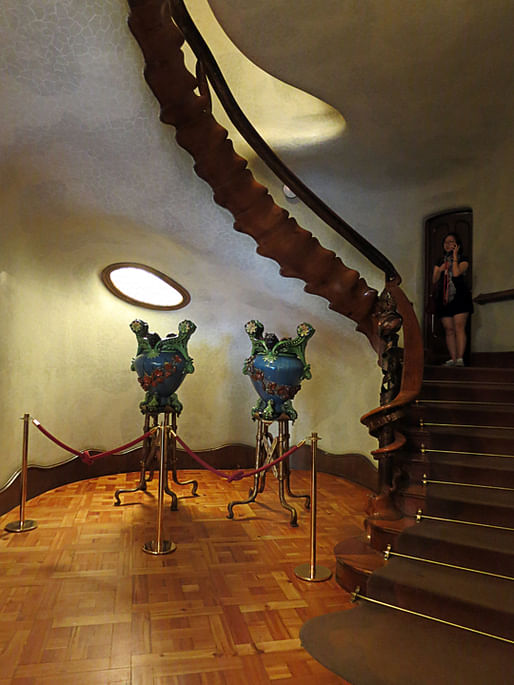
Spine-esque wooden staircase in the entrance of the house.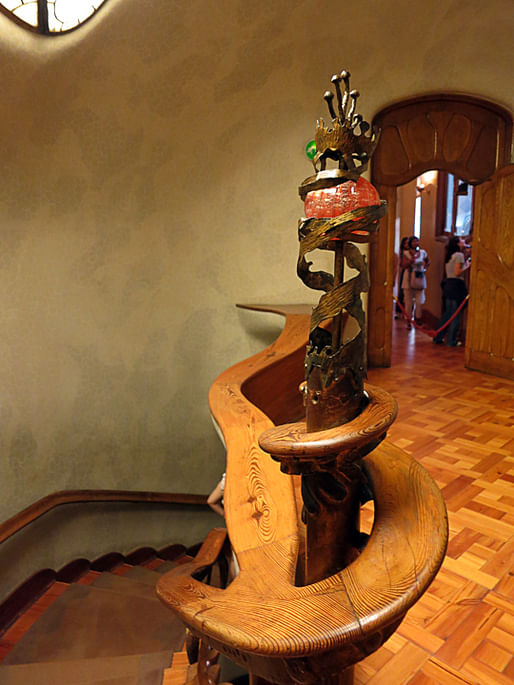
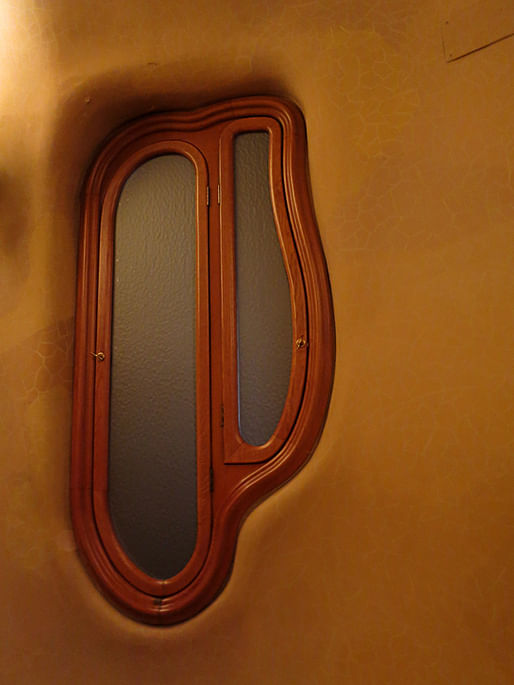

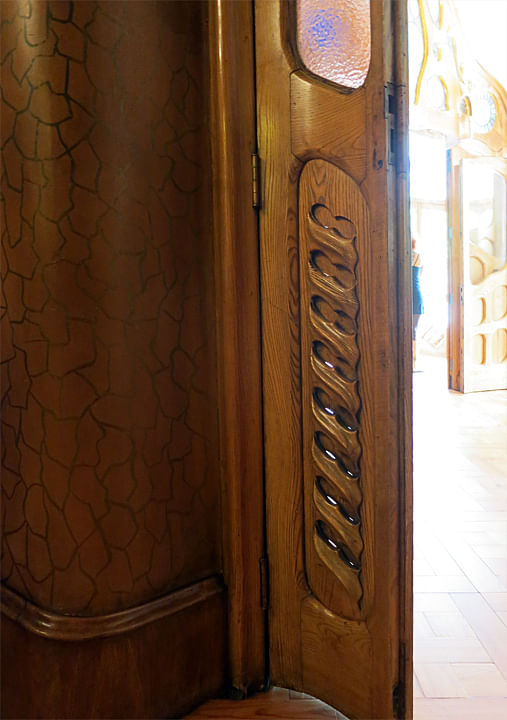
Detail of wooden slits which can be opened and closed to ensure good ventilation.
Casa Batlló: The Lights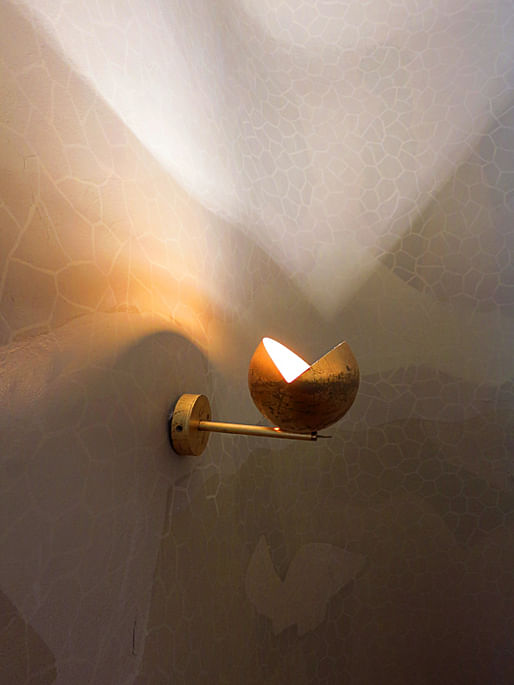
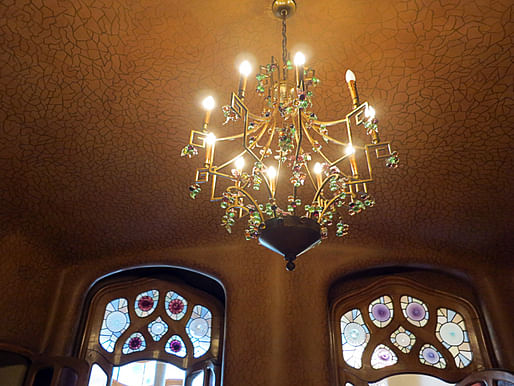
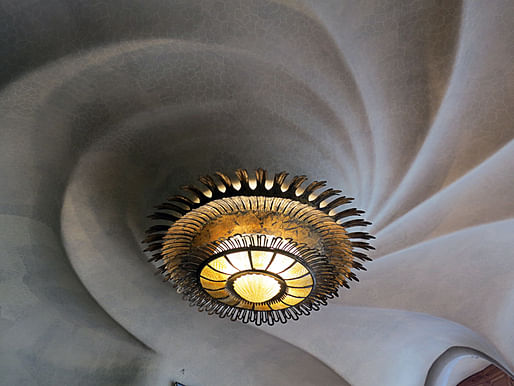
Lamp and ceiling reference an almost aquatic swirl.
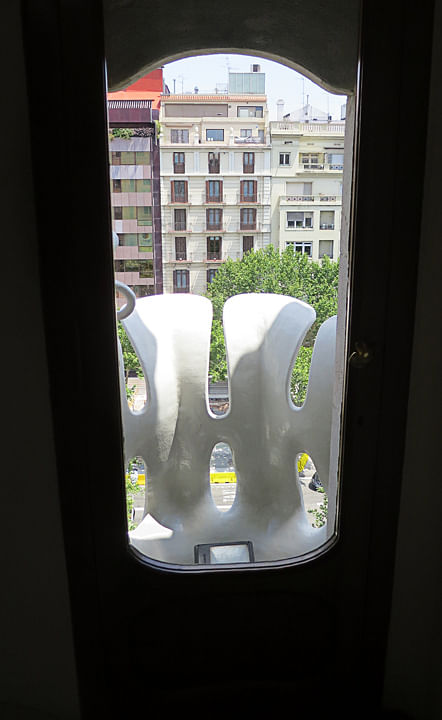
Casa Batlló: The Lightwell
The color of the mosaic tiles in the lightwell are designed to optimize the light streaming from the skylight.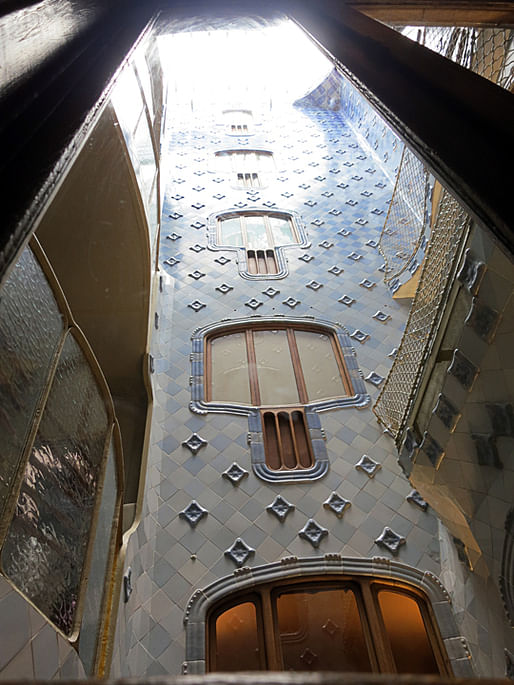
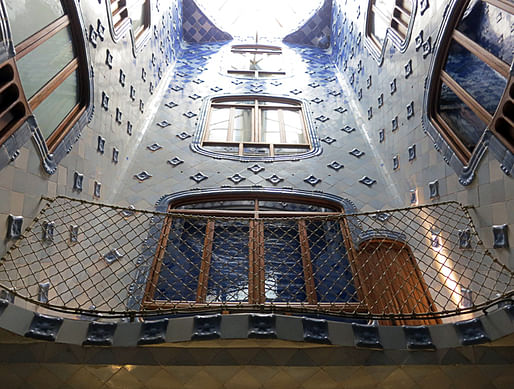



Casa Batlló: The Roof
The roof’s profile mimics the spine of a dragon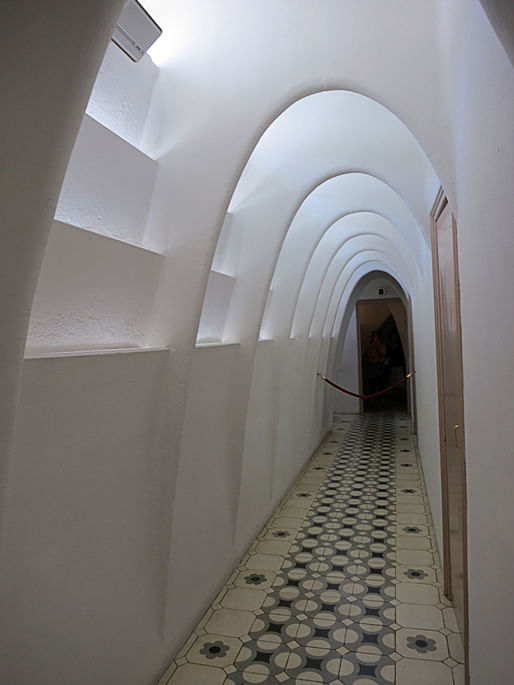
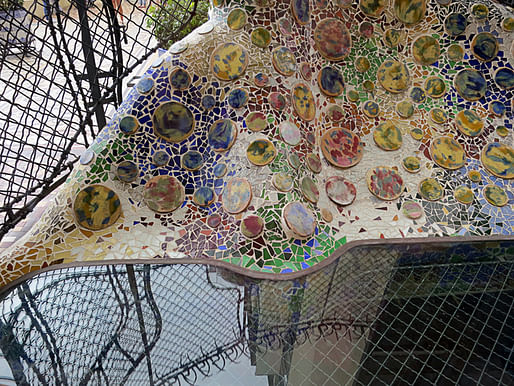
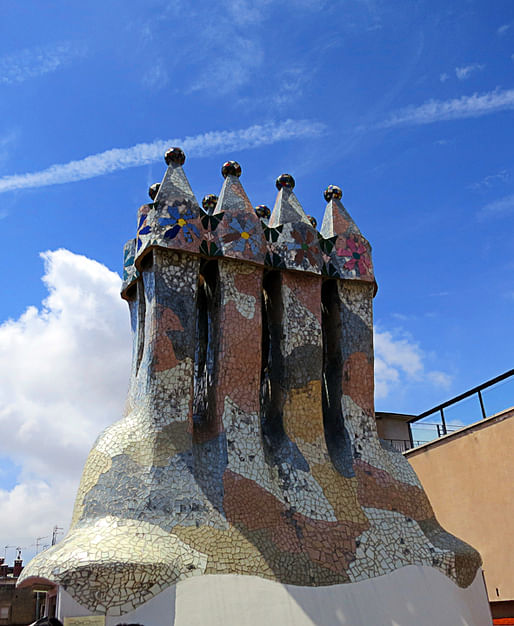
Antoni Gaudí: Casa Mila
Located three blocks away from Casa Batlló along the Passeig de Gràcia stands the Casa Mila also known as La Pedrera. Designed by Antoni Gaudí it was completed in 1912. It was built for the couple Roser Segimon and Pere Milà. 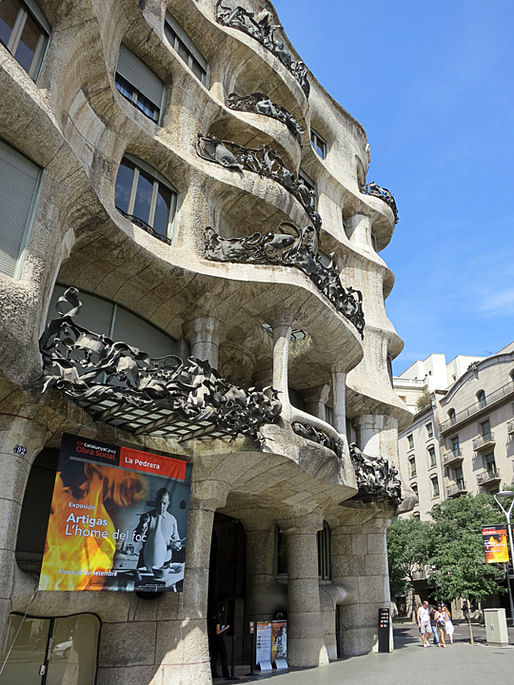
The building currently contains a free exhibition on the first floor and an apartment exhibit as well as a museum exhibit and access to the roof.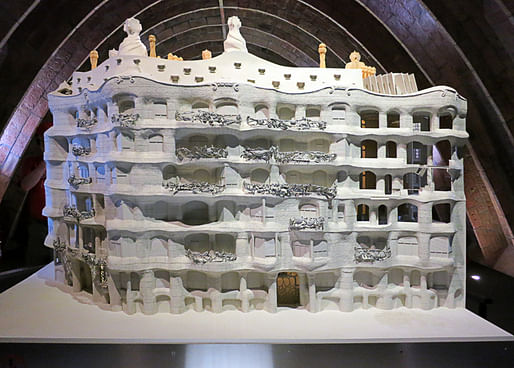
Model of La Pedrera in the exhibition space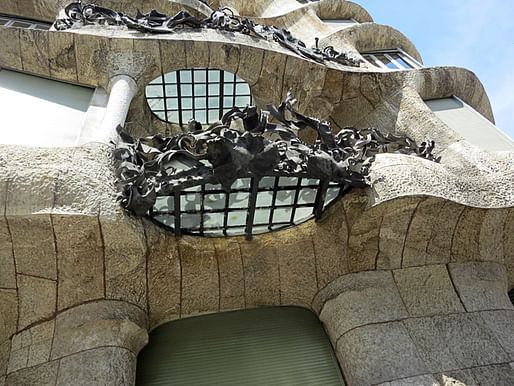
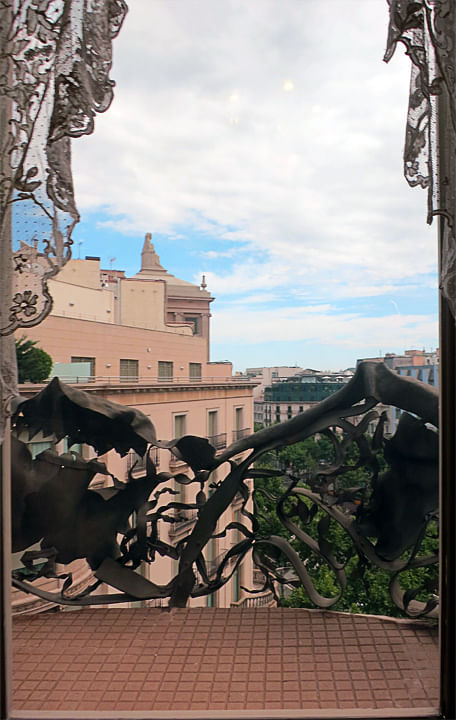




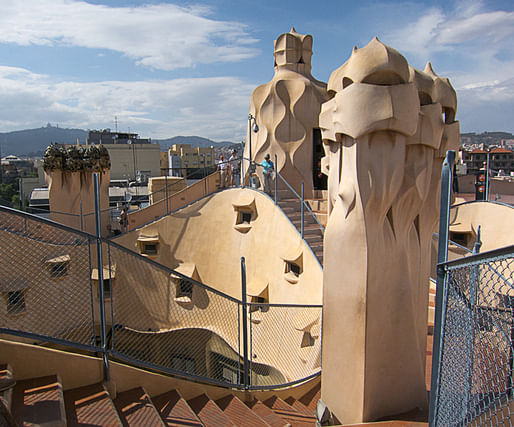 It is interesting to compare to previous posts of Finland and how the European Art Nouveau movement manifested itself as the Jugend style. Finland’s recent independence from Russia and desire for a modern romantic nationalistic movement created an entirely different interpretation of the European Art Nouveau.
It is interesting to compare to previous posts of Finland and how the European Art Nouveau movement manifested itself as the Jugend style. Finland’s recent independence from Russia and desire for a modern romantic nationalistic movement created an entirely different interpretation of the European Art Nouveau. 
View from the roof of La Pedrera of the old and the new. Sagrada Familia, still under construction, and Torre Agbar.
Eixample
The Eixample (pronunciation) is a district north of Ciutat Vella, the old city of Barcelona. Ildefons Cerdà, a Catalan Spanish urban planner, designed the iconic Eixample grid extension in 1875. The expansion plan proposed a strict grid that was framed by the two rivers of Barcelona (the Llobregat river and the Besòs rivers) and Montjuïc. The extension was planned in contrast to the congested and narrow old walled city of Barcelona. 
Cerdà focused on designing an extension with ample sunlight, natural ventilation, green space, sewage systems, and ease of movement. The designed was based upon a study of traffic patterns. Each modular block measured 200m x 200m with chamfered corners. Each block was its own entity responsible for the urban infrastructural maintenance of its own quadrant & sewage. The original plan established a maximum building height of 16 meters.
Antoni Gaudí: Sagrada Familia
The construction of La Sagrada Familia began in 1882. Gaudí devoted the last years of his life to the church. On June 7th, 1926, while crossing the Gran Via de les Corts Catalanes, Gaudí was hit by a tram. As he lay on the street disheveled and dressed in rags citizens passed by him without recognition. He was brought to a hospital for the poor where a day later friends found him. Three days later on the 10th of June 1926 Gaudí died at the age of 73. The Sagrada Familia was less then a quarter completed. During the Spanish Civil War (17 July 1936 to 1 April 1939) Gaudi’s models and drawings were destroyed.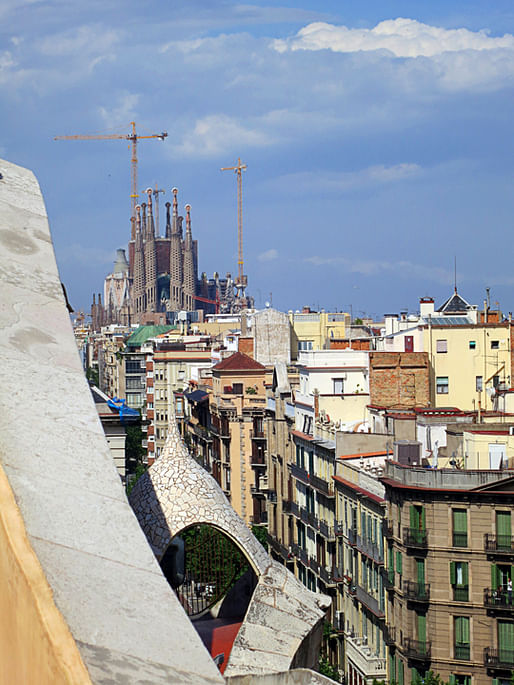
The church is an expiatory church, funded solely on donations.
"The expiatory church of La Sagrada Família is made by the people and is mirrored in them. It is a work that is in the hands of God and the will of the people." - Gaudí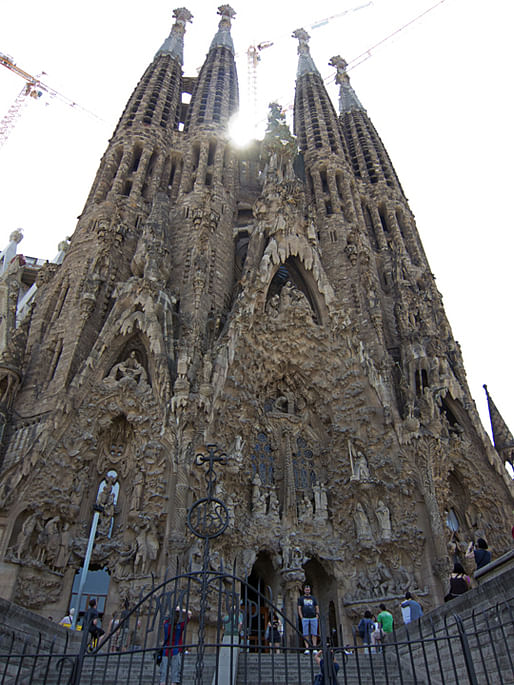
The Nativity façade is one of the churche’s three main façades. It was constructed before work was interrupted in 1935 by the Spanish Civil War and bears the most direct Gaudí influence. It is dedicated to the birth of Jesus.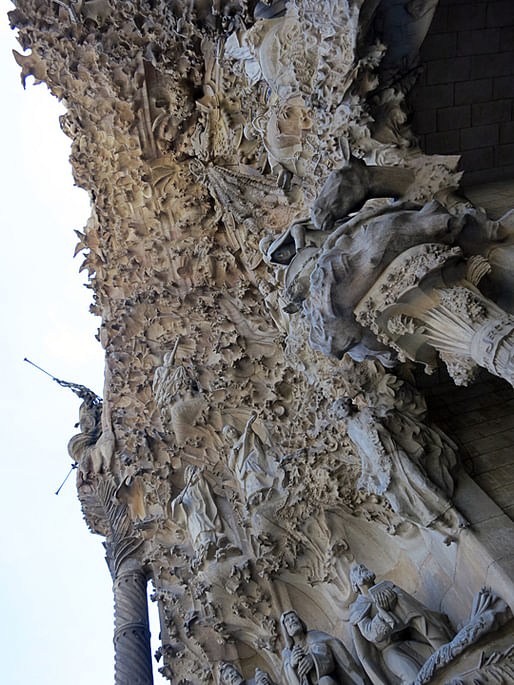
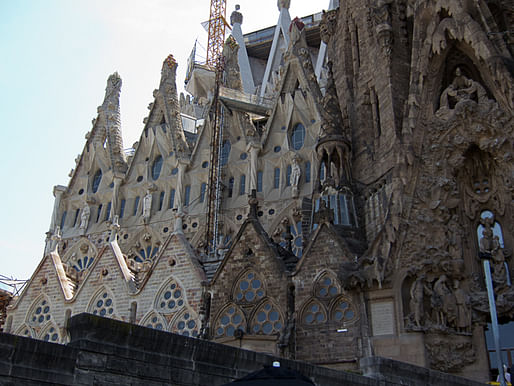
The stark contrast in the juxtaposition of the old and the new in the facade.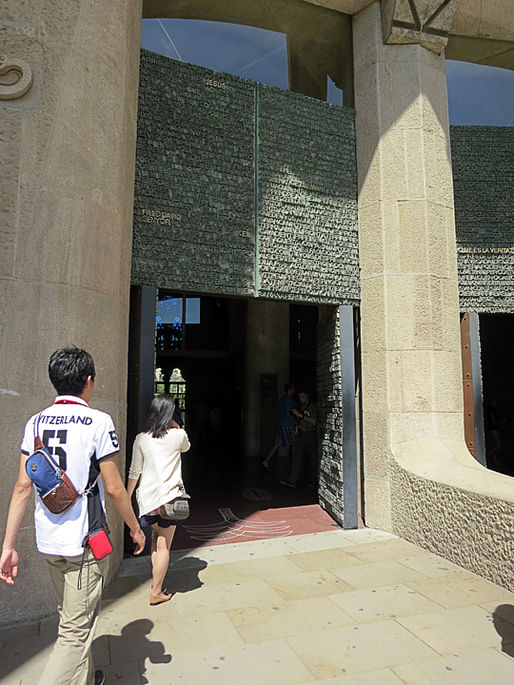
Sagrada Familia: The Interior Space
The columns of the interior space were designed by Gaudí to mimic trees and branches.
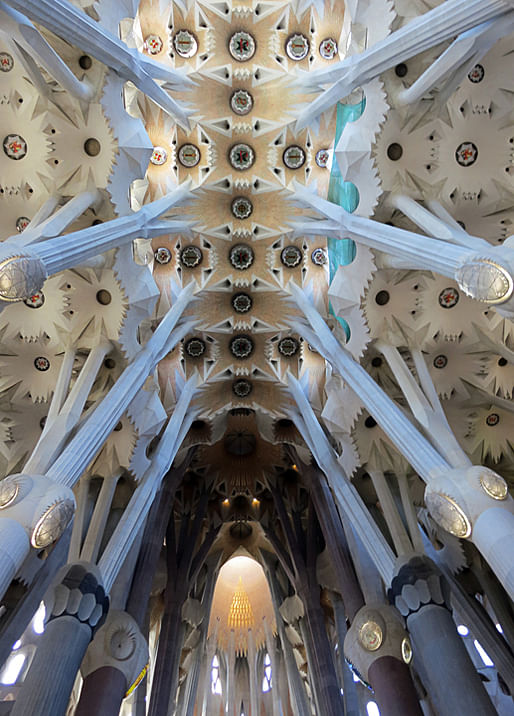

Joan Vila-Grau has been creating the stained glass since 1999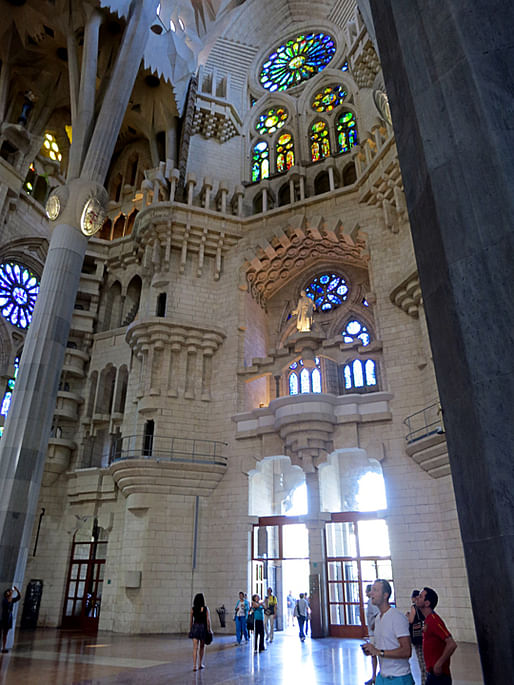
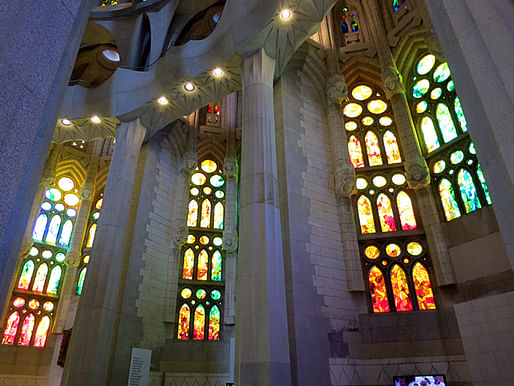
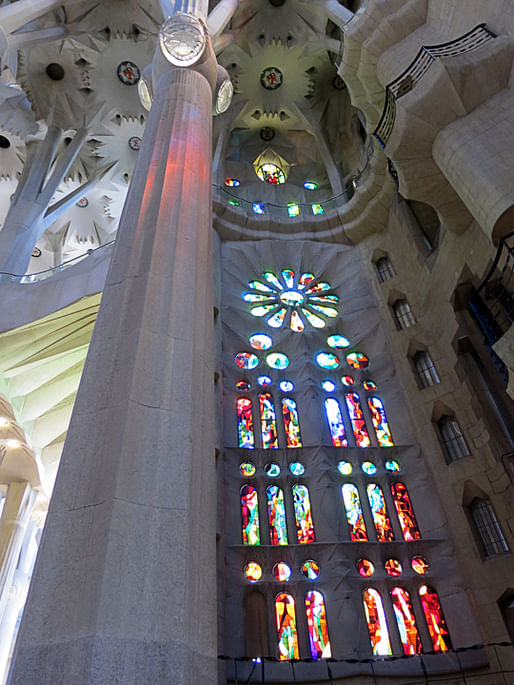
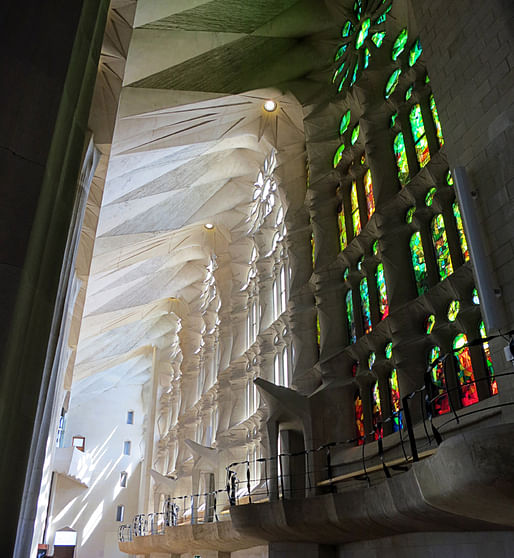
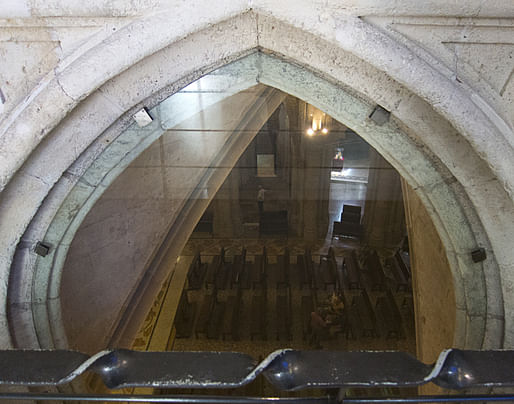

Sagrada Familia: The Tower
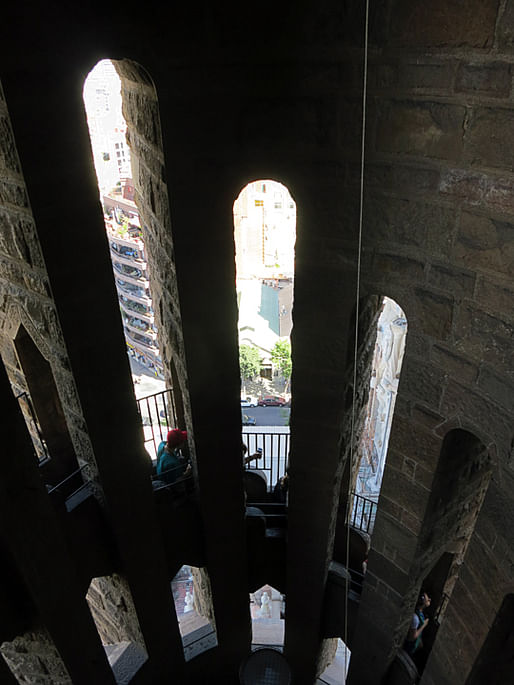



Plaça de les Glòries
In Ildefons Cerdà’s design of Barcelona’s extension, the Plaça de les Glòries was conceived of as the new city center. Currently it is at the junction of the city’s more important throughfares. The Avinguda Diagonal, Avinguda Meridiana and Gran Via de les Corts Catalanes. However it has become a large roundabout for a series of elevated highways. In recent revitalization efforts, new structures have been planned for the area around the Plaça de les Glòries.
Torre Agbar
The first and most well known project is the Torre Agbar by the French architect Jean Nouvel in association with the Spanish firm B720 Arquitectos. Opened in 2005, it is located in the Poblenou neighborhood of Barcelona. 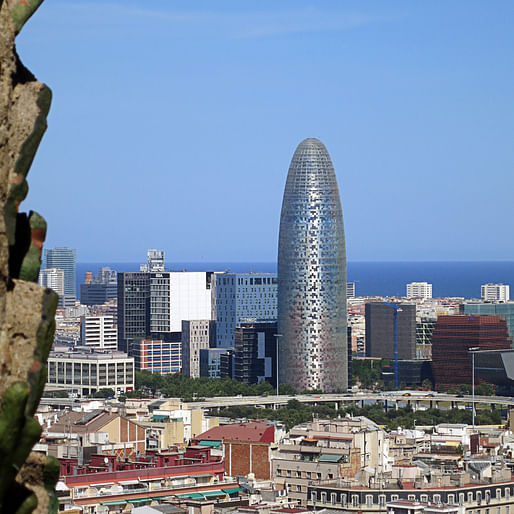
The form of the Torre Agbar was inspired by Montserrat. It is built with reinforced concrete with a façade of glass and 4,500 individual windows that puncture the structural concrete. The building has a series of temperature sensors that regulate the window blinds of the building façade to reduce energy consumption. At nightfall the buildings façade is illuminated with 4,500 LED devices.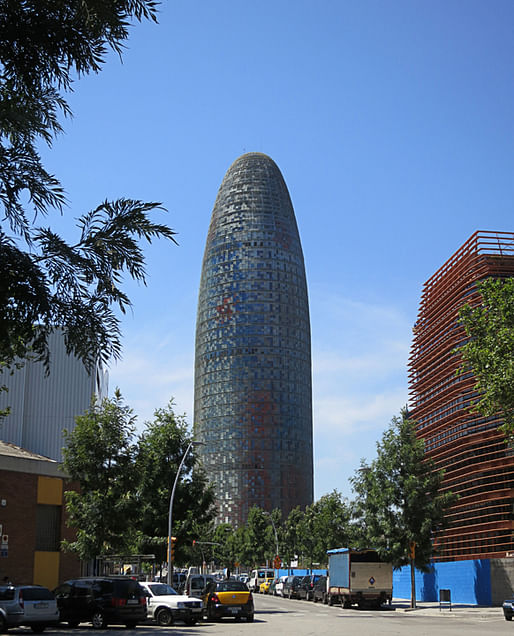
Torre Agbar: The Approaches
As you approach Torre Agbar, the facade reacts with the colorful concrete core and changes appearances at various angles and distances.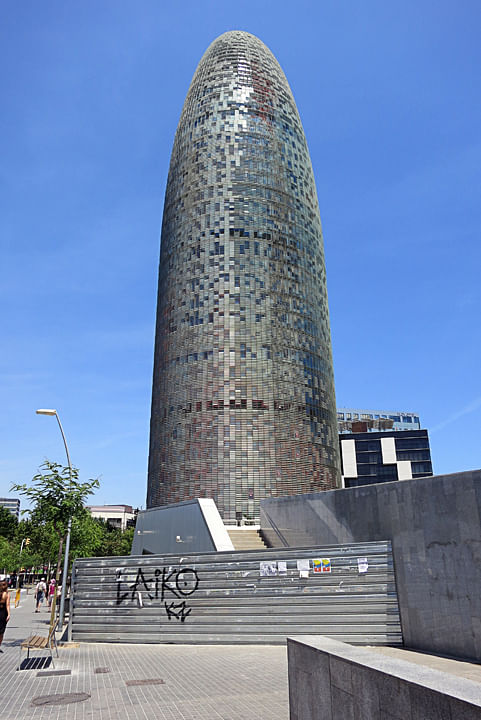
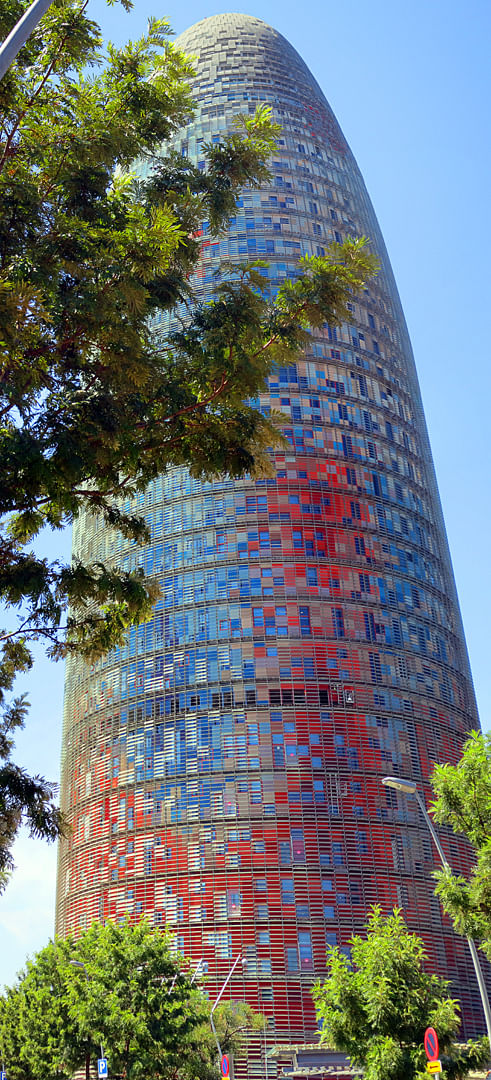

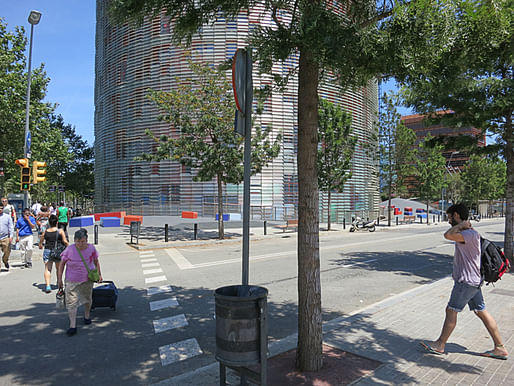
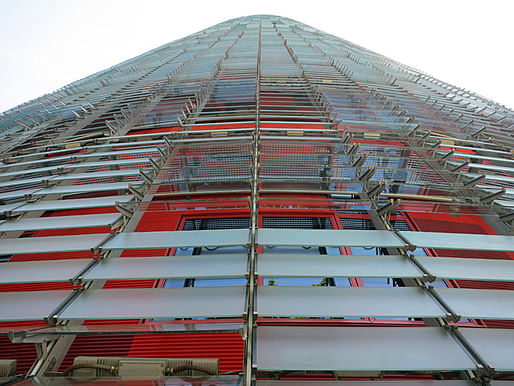
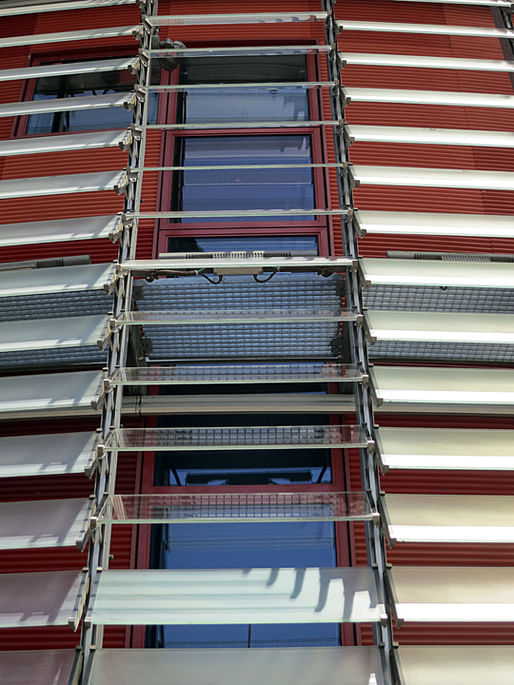
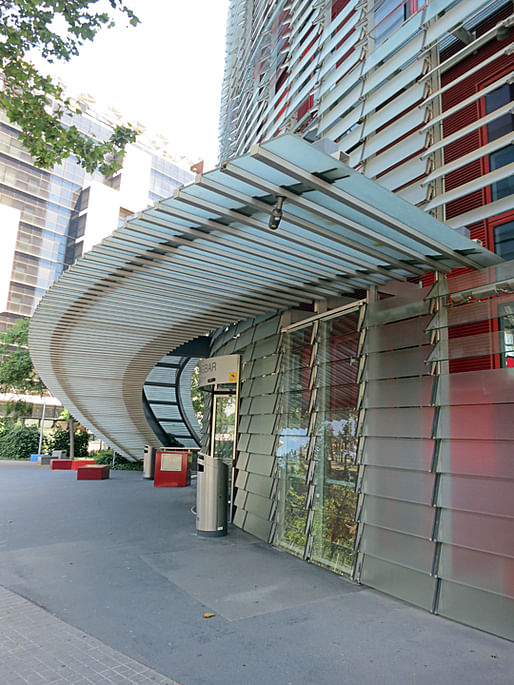
The entrance into Torre Agbar.
The structure is 34 stories above ground with 4 floors below ground.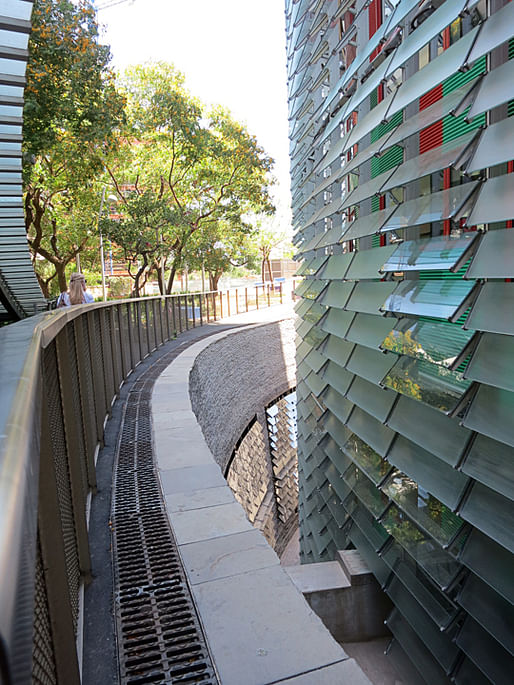
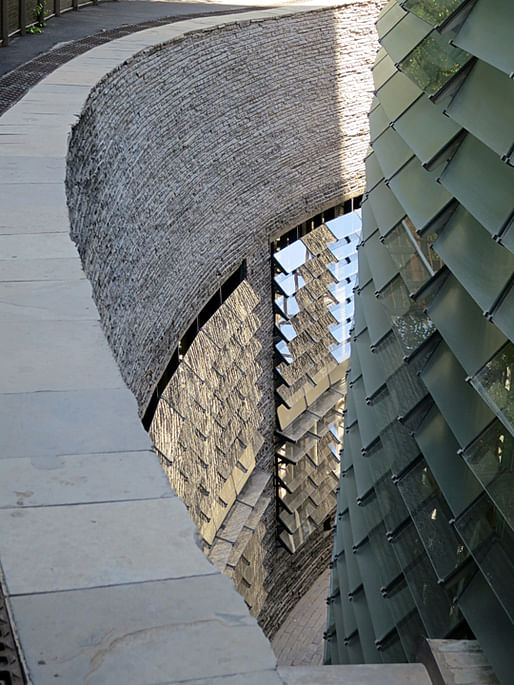
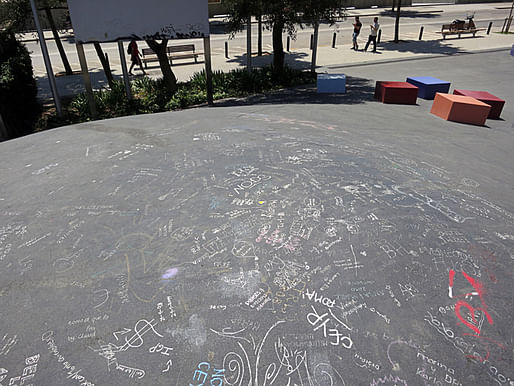
A chalk graffi hill next to the tower.
Torre Agbar: The Interior
Plan of the lobby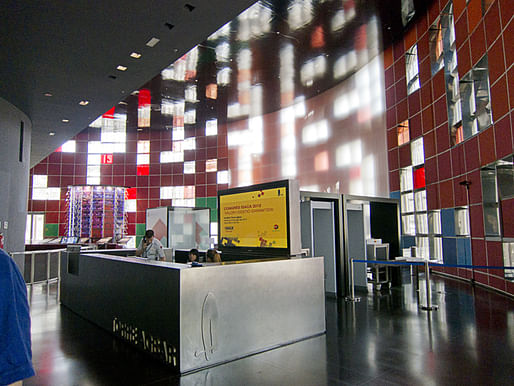
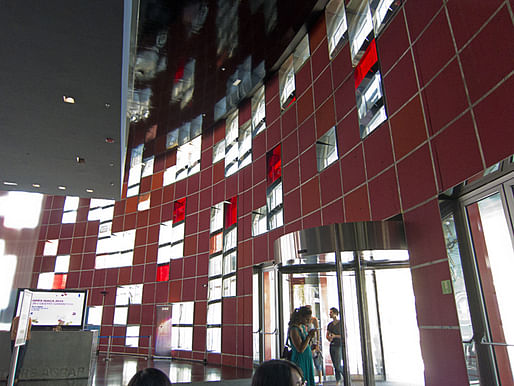
From afar, the lobby looks well constructed, however upon closer inspection various hastily construction details appear.

The metal panels used in the cylindrical tower were not designed to fit the continuous curving form of the structure. Jagged dark gaps appear between each reflective panel.
Connections between the panels are not flush. Construction markings are still visible on the concrete.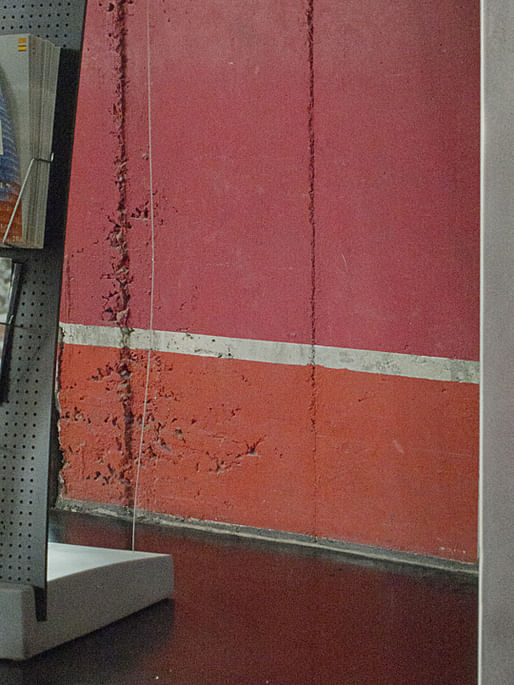
Various imperfections and connections are visible in the concrete all over the lobby.
Disseny Hub (Design Hub Barcelona)
The Design Hub Barcelona (DHUB) is the new permanent headquarters for Barcelona’s cultural institute. It focuses on space design, product design, information design, and fashion design. It is conceived of as a central location for all collections relation to the world of design in Barcelona. It is designed by MBM architectural firm formed by Oriol Martorell, Oriol Bohigas and David Mackay.
Media TIC
Media TIC is an information and communication technology hub. It is designed by Barcelona architects Cloud 9. Relating back to the idea of technology, the building was designed using CAD-CAM digital processes. 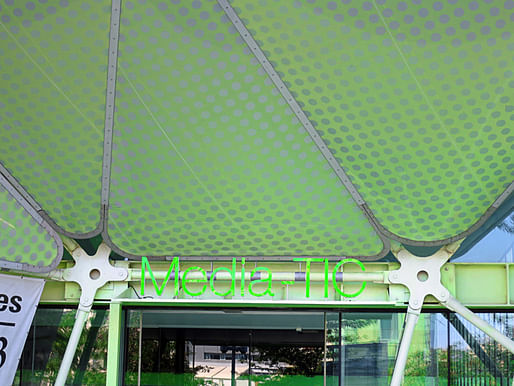
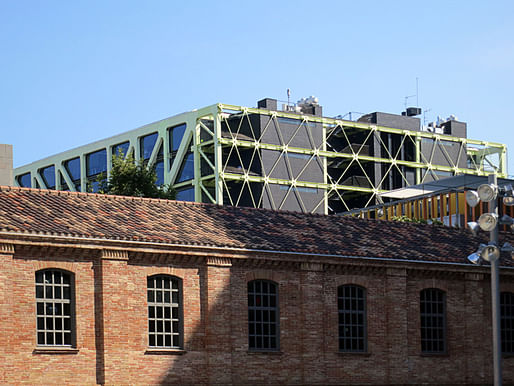
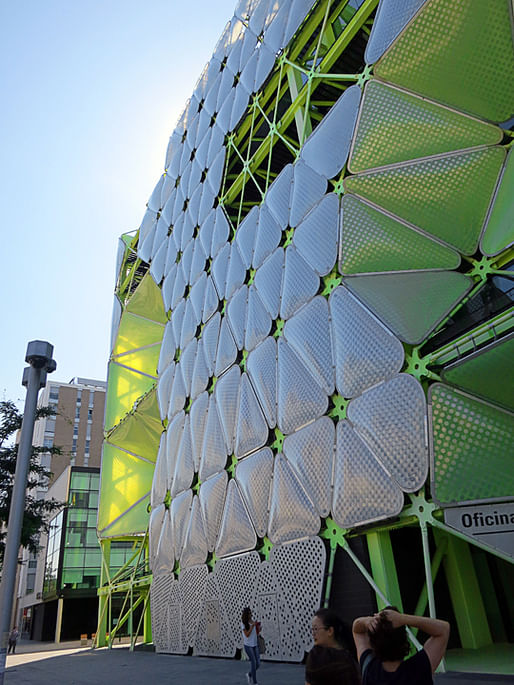
Two of the four façade are made of the eco-efficient material ethylene tetrafluoroethylene (ETFE) cladding. The ETFE cladding has a diaphragm configuration where the pillows can inflate and deflate with nitrogen according to the intensity of the sun. The air density of the particles create a cloud-like solar filter achieving energy savings of 20%. 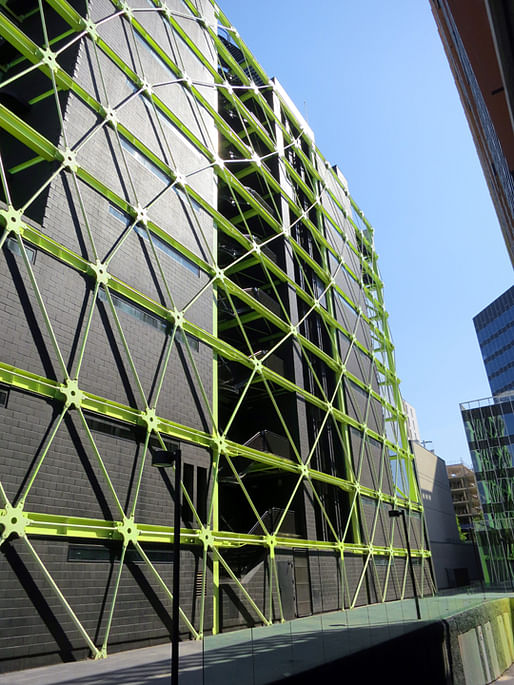
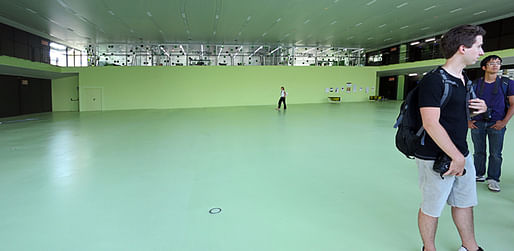
The structure of the building is located on the exterior allowing for a column free, unobstructed, open interior space.
Mies German Pavilion
The German national pavilion was built in 1929 for the International Fair in Barcelona. It was designed by Ludwig Mies van der Rohe. The building symbolized the official opening of the German section of the exhibition. It demonstrated a simple form of glass and steel with extravagant materials such as marble, red onyx and travertine. The pavilion also introduced Mies’ Barcelona chair.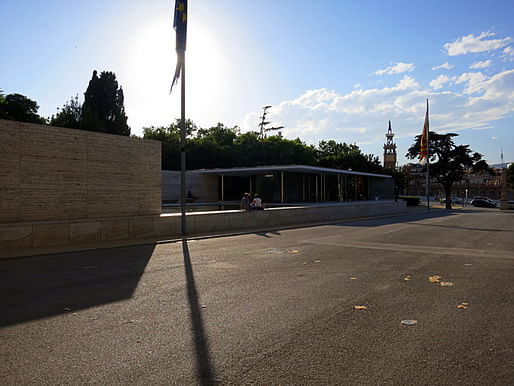
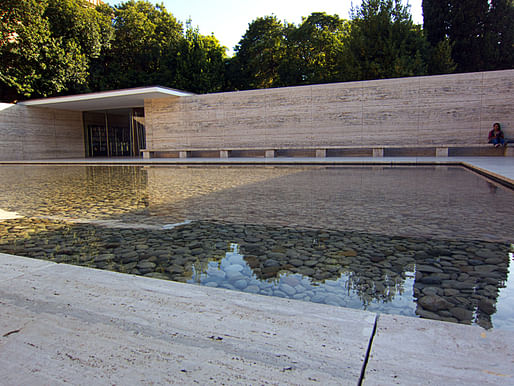

Eixample New Development & Park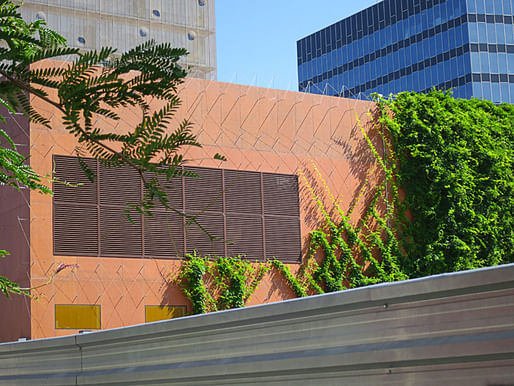

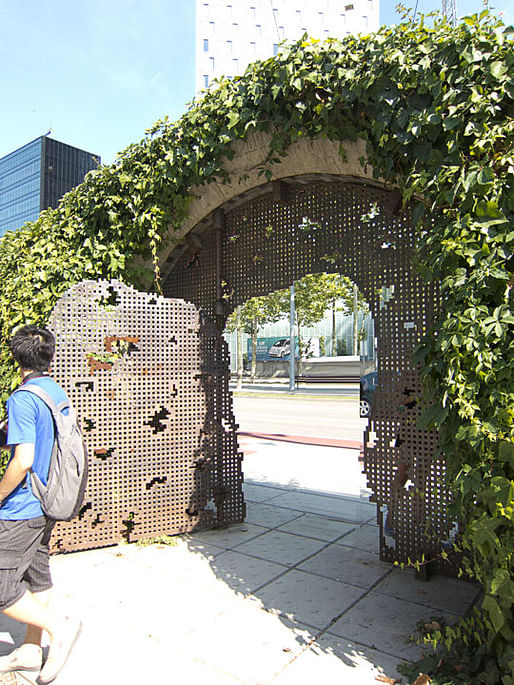
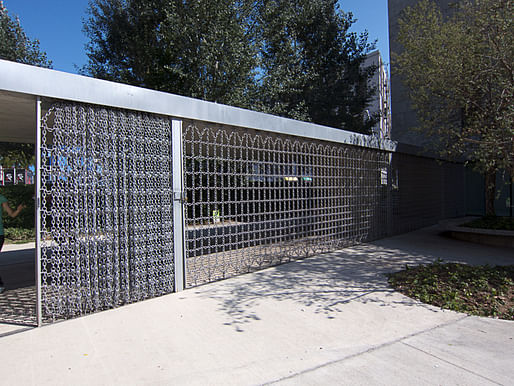
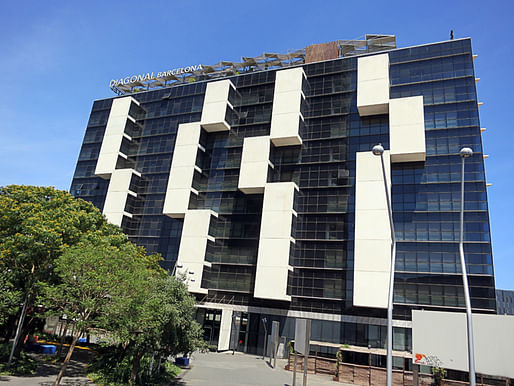
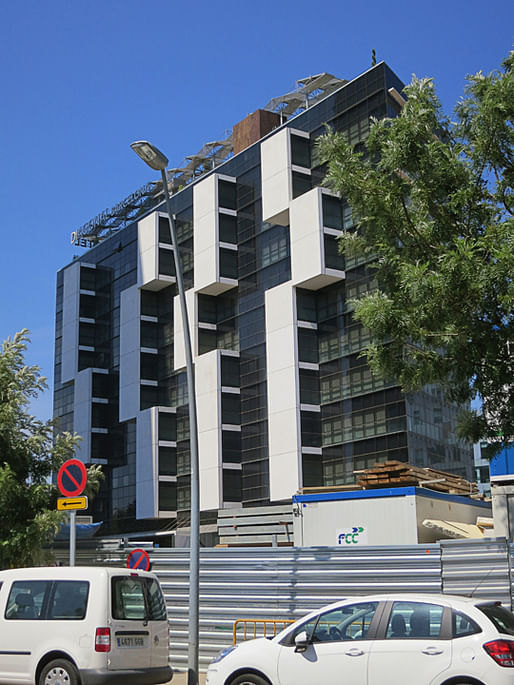

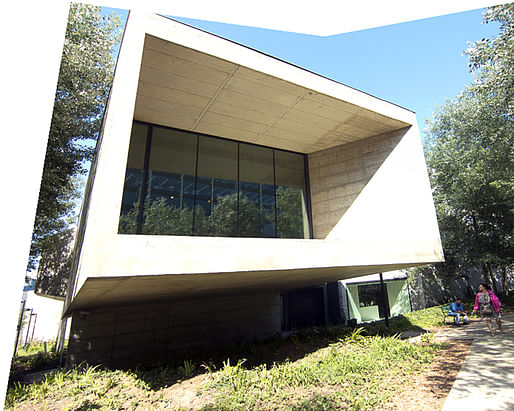

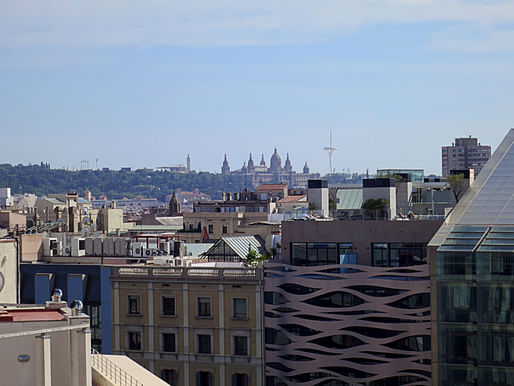
El Vestit - Foundation BESTIARI at Ciutat Vella
In the previous post I introduced the concept sketches of my site and my intervention into the Plaça del Duc de Medinacelli. At the site of the Plaça del Duc de Medinacelli the program of the building was to create a center for Barcelona’s Giant Parade La Merce.
The building is a manifestation of my impressions of Barcelona. Sensuous, intuitive, and playful.
More about the project…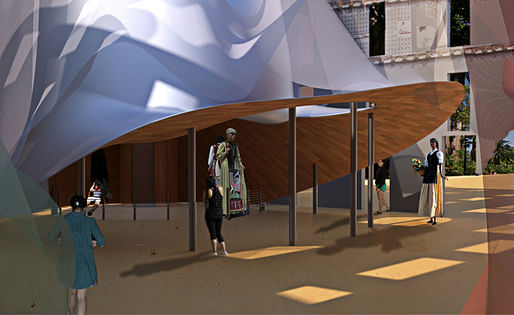


This work by Jennifer A. Wong is licensed under a Creative Commons Attribution-NonCommercial-NoDerivs 3.0 Unported License.
A new adventure begins as we finish one chapter; we hope to share our story with you. We are graduates of Washington University in St. Louis, Sam Fox School of Design & Visual Arts.
3 Comments
Very good and professionally crafted architecture... Appreciate
WoW! Thanks for the visual Treat...
Awesome pics....I really felt like I went there with you.
Block this user
Are you sure you want to block this user and hide all related comments throughout the site?
Archinect
This is your first comment on Archinect. Your comment will be visible once approved.